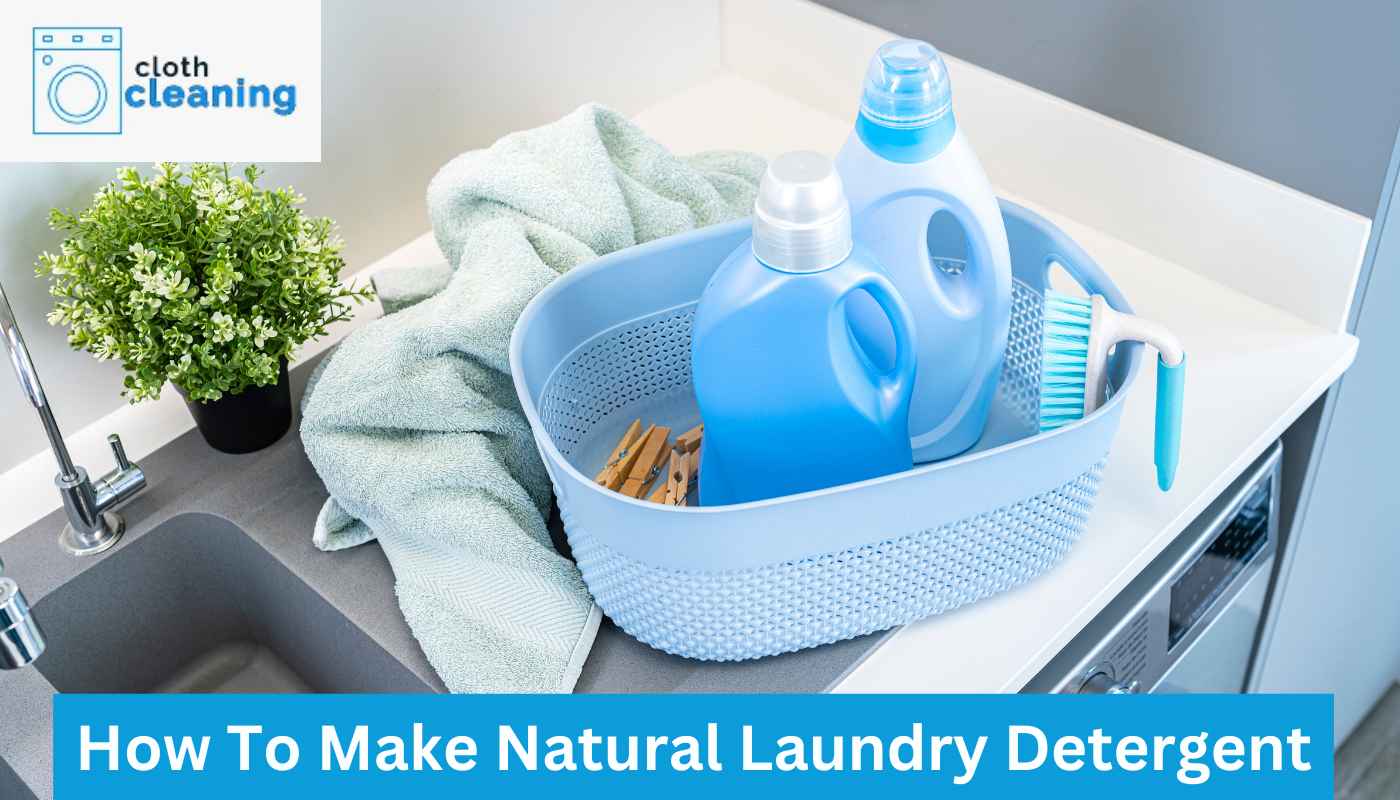In today’s environmentally conscious world, creating your natural laundry detergent has become increasingly popular. Many of the chemicals and compounds found in commercial laundry detergents can be harmful to both the environment and your skin.
Producing your own detergent grants you the authority to select the ingredients, thus enabling you to curtail your carbon footprint significantly.
In this article, we will guide you through the process of how to make natural laundry detergent that is safe for the environment and your skin as well as effective in cleaning your clothes. Presented below is the compilation of ingredients you will require.
Ingredients Required For “How To Make Natural Laundry Detergent” :
1-Soap flakes and Castile
Both soap flakes and castile soap are gentle, natural, and biodegradable options that effectively clean skin, and fabrics, and remove dirt, stains, and odors.
Soap flakes and castile soap are natural, biodegradable, and effective soaps for cleaning fabrics and skin. Soap flakes are grated pure soap made from plant-based oils, while castile soap is a mild and versatile soap made from vegetable oils. Choose a natural type for laundry to ensure it is gentle on the skin, fabrics, and the environment.
2-Washing Soda
Washing soda, or sodium carbonate, serves as an eco-friendly and safe cleaning agent, adept at effortlessly eradicating stains, neutralizing odors, and eliminating dirt. It can also soften water, improving the efficacy of laundry detergents.
3-Baking Soda
Baking soda, also known as sodium bicarbonate, is a natural, non-toxic substance that has many uses around the home. Baking soda is a multi-functional laundry aid that enhances cleaning, eliminates odors, brightens colors, softens fabrics, and cleans washing machines.
4-Essential Oils
Essential oils are concentrated extracts from plants with various benefits, such as antimicrobial, antiseptic, and deodorizing properties. Incorporating them into your laundry detergent to freshen clothes and eliminate any unpleasant smells. Some of the best essential oils for laundry include Lavender, Lemon, and Eucalyptus.
Now, here are the equipments to make natural laundry detergent.
Equipment’s
There are three equipment that will be used for homemade laundry detergent as Grater or food processor, a mixing bowl, and an airtight container.
When making homemade detergent from soap, use a grater or food processor to create soap flakes and a large mixing bowl to combine dry ingredients. Finally, keep the detergent in a jar that is sealed to maintain its efficacy and longevity.
Recipe
This recipe provides approximate measurements, which can be adjusted based on preferences and needs.
Step 01: Grate the Soap
Use a sharp grater with fine holes. A cheese grater works well. Grate the soap over a bowl or other container to catch the soap flakes. Grate the soap in manageable portions to avoid excessive heat buildup during the process. Put on a pair of gloves to shield your hands from the soap’s effects and potential irritation.
In the absence of a grater, a food processor can also be employed to finely grate the soap. Pulse the soap on the coarsest setting until it is finely grated.
Step 02: Mix the ingredients
Place the ingredients in a large mixing bowl, and combine:
- 1 cup of soap flakes or grated castile soap
- ½ cup of washing soda
- ½ cup of baking soda
Step 03: Essential Oils
Introduce 20-30 drops of your preferred essential oils to the dry mixture, infusing your detergent with a delightful and personalized fragrance. While entirely optional, this step contributes a pleasing aroma to your detergent blend.
Step 04: Store and Use
Carefully move your homemade natural laundry detergent into a sealed jar to maintain its freshness. Dispense 2-3 tablespoons of detergent, adjusting based on your laundry load’s size and the extent of dirtiness. For tackling stubborn stains, consider pre-treating by crafting a paste from a blend of detergent and water.
Additional Tips
Here are some additional tips on How to make natural laundry detergent.
1-Test your detergent
To test your detergent, just have a white piece of cloth, a small amount of DIY detergent, and water. Wet the white cloth with water. Apply a small amount of your homemade laundry detergent to the wet cloth. Rub the detergent into the cloth. Let the cloth sit for 30 minutes. Rinse the cloth with water. Check the cloth for any color transfer.
If there is no color transfer, then your homemade laundry detergent is safe to use on colored fabrics. If there is color transfer, then you may need to adjust the recipe or use a different type of detergent on colored fabrics.
2-Storage
Homemade laundry detergent should be stored in a cool and dry location, safeguarded from the rays of the sun. This practice aids in preventing the detergent from forming clumps over time. You can store your detergent in a sealed jar, like as a Mason jar or plastic container.
3-Customize
Feel free to adjust the essential oil scents or quantities of ingredients to suit your preferences. If you want a milder scent, add fewer essential oils. Customize the quantities of the remaining ingredients to align with your specific needs and preferences. For example, Depending on the hardness of the water, you may need to increase the amount of washing soda used.
Benefits of Natural Detergent
Some of the benefits of DIY natural laundry detergent are:
It is cheaper than buying commercial detergent, as you can use common household ingredients that are easy to find and affordable.
It is customizable, as you can choose the scent, texture, and strength of your detergent by adding different essential oils, herbs, or other additives.
It is eco-friendly, as you can reduce waste by reusing containers, avoid plastic packaging, and minimize water pollution by using biodegradable ingredients.
Frequently Asked Questions:
Some of the frequently asked questions about how to make natural laundry detergent are:
What ingredients do I need to make natural laundry detergent?
There are different recipes for making natural laundry detergent, but some of the common ingredients are:
- Washing soda (sodium carbonate)
- Baking soda (sodium bicarbonate)
- Citric acid
- Natural soap (such as castile soap)
- Essential oil (optional)
How much natural laundry detergent should I use per load?
The amount of natural laundry detergent you need to use depends on the size and soil level of your load, as well as the hardness of your water. A general guideline is to use 1-2 tablespoons of powder detergent or 1/4-1/2 cup of liquid detergent per load. You may need to adjust the amount according to your washing machine and personal preference.
How long does natural laundry detergent last?
Natural laundry detergent can last for several months if stored properly in a cool, dry place. However, some ingredients may lose their effectiveness over time, such as citric acid or hydrogen peroxide. You can check the expiration date of your ingredients and replace them as needed.
Conclusion
Unlock the process of how to make natural laundry detergent through our comprehensive guide, where we’ve meticulously outlined each step for your convenience. Making natural laundry detergent at home is a rewarding and eco-friendly DIY activity that lessens your influence on the environment.
Using natural ingredients helps preserve the environment, improve skin health, and keep clothes fresh. Now, it’s time to make your own DIY natural laundry detergent and have fun with it.

